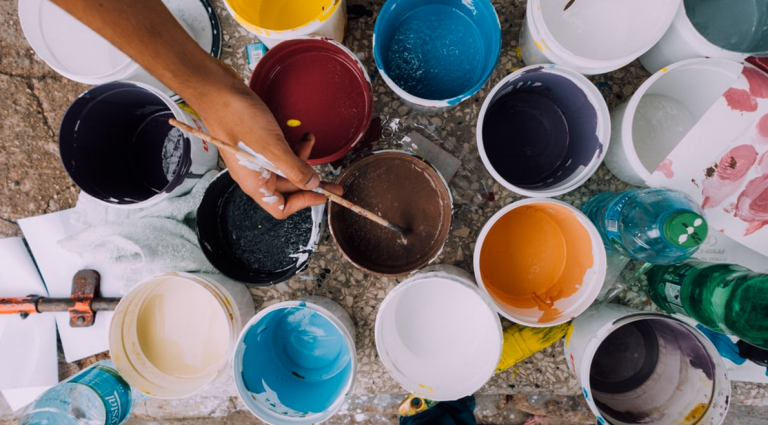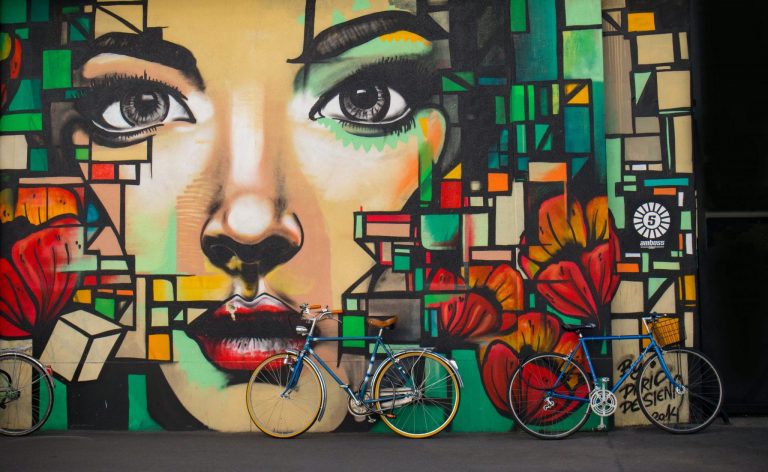Due to budget cuts and other reasons, schools nationwide are slowly eliminating art activities from their curriculum. However, visual and performing arts are critical elements of a holistic education philosophy and can significantly improve teens’ lives; if these programs are fully cut from school curriculums, then students won’t have access to outlets for creativity and freedom of expression critical to their growth. To counter this trend, summer camps and after-school teens’ art classes can effectively support a holistic education system.
Platform for Freedom of Expression
There are so many different mediums of art for students to find their passion in. Within visual arts, there are programs for drawing, sketching, painting, sculpting, and animation; within performing arts, there are programs for hip hop dance, aerial dance, ballet, theatre, choir, and instrumental performance. And the options don’t even stop there. So the problem is not a lack of opportunities; when students struggle to express themselves, it often comes from a lack of self-awareness that art can help reveal. Some art forms won’t work for everyone, but that’s okay as long as teens continue to explore until they find something that appeals to them; it can be its own struggle to find the right medium for self-expression, yet students will continually learn about themselves as they find their ideal form of art. Guidance is often critical, though, which is why arts-based after-school activities for teenagers that provide a safe environment for self-expression can most effectively push teens to focus inwards and explore their worldview.
Encourage Creative Thinking
In teens’ art classes, adolescents are encouraged to think creatively, a skill that will be immensely valuable for the rest of their lives. Out-of-the-box thinking is required in almost every real-world situation, and teens who participate in art activities are more likely to find innovative solutions due to their creative and introspective foundations. Participating in an after-school arts program can also be a huge boost when pursuing higher education because universities are always on the lookout for well-rounded individuals; even when not applying for performing arts institutions, students can still include portfolios featuring artistic endeavors that add great depth to any college application.
Help Develop Fine Motor Skills
In addition to the well-recognized mental and spiritual benefits, art-based afterschool activities for teenagers facilitate a great deal of physical growth and help hone fine motor skills. For example, drawing, sketching and painting help learners improve hand-eye coordination. Dance lessons are great for improving fitness, coordination, flexibility, and stamina. Martial arts programs such as taekwondo and hapkido lead to better physical fitness and ability to concentrate – not to mention the value that comes from focusing on discipline, respect, and self-control. In photography classes, students sharpen vision and develop a keen eye for detail. No matter which medium calls out an adolescent, all artistic pursuits heavily involve coordination and focus that manifest themselves in developed fine motor skills.

Help Nurture Talent and Passion
If a teen discovers a passion for a particular visual or performance art form, then an after-school program for that focus is the best way to nurture talent and develop foundational skills in the art. Many adolescents have the potential to be good artists – some may even become the next Picasso or Beethoven – but they’ll never know until they find the platform to hone their talent (and even for students less dedicated to visual and/or performance arts, artistic endeavors can help unveil more general passions in life). The best arts programs are spearheaded by professionals where teens are given access to premium learning tools. For example, in an after-school or summer photography program, an experienced photographer may teach adolescents how to use a DSLR camera, use filters, work in natural vs artificial light, and many other skills of the trade. Techniques like these are vital to the art but can be quite difficult to grasp, so it is imperative for teens to have mentors guide them through the discipline and teach them about its nuances. It may also take a while for a student to realize their passion within a medium as they struggle through its technicalities, so leadership throughout these experimental phases paves the way to most quickly identifying an artistic passion.
Help Build Self Confidence
Very often, arts programs involve projects before live audiences that demonstrate the skills acquired throughout the respective program. In dance, this may be a choreographed routine; in music, this may be a live performance; in art, this may be a gallery presentation. For a teenager, this can be a great way to develop self-esteem and self-confidence because 1) there’s nothing better for validation than to feel appreciated for creative efforts and 2) individuals actually try their hardest and perform their best when they are in the zone. Students who participate in an extracurricular arts program are more likely to feel motivated to attend school and, as a result of both this and the added self-confidence, deliver better academic outcomes.
Provide Space to Connect With Like Minded Individuals
Arts programs are healthy and safe environments for teens to engage with like-minded peers. Shared interests and shared participation in these events lead to a sense of belonging that students often lack without these programs. Participants eventually become one big, tight-knit community under the mentorship of an able instructor who leads them to their creative aspirations; this sense of community is valuable even from a productive standpoint because it instills fun and competition which encourage adolescents to try their hardest – in any case, boredom is out of the question.
The benefits to including the arts in young people’s lives don’t even stop there, which is why it’s such a shame that high schools continue cutting arts education out of the budget. But teens can still let the arts be important parts of their lives if they add arts-based programs into their schedules; and even for adolescents with in-school arts programs, adding additional creative endeavors to their lives can still further improve their growth towards adulthood.
Find the best teen visual and performing arts classes at your fingertips – simply download the free Spotivity mobile app!
About Spotivity
Be #neverbored again by using the spotivity app and find activities that fit your needs. We help you find programing that can lead to your passion. Whether that is an art program to practice graffiti, a sports program to engage in competition, an education support class to improve your grades, or just finding someone to talk to – spotivity has your back. Backed by research and continually informed by users, spotivity is the tool to help you unlock your world and expand the list of options you can take advantage of.




